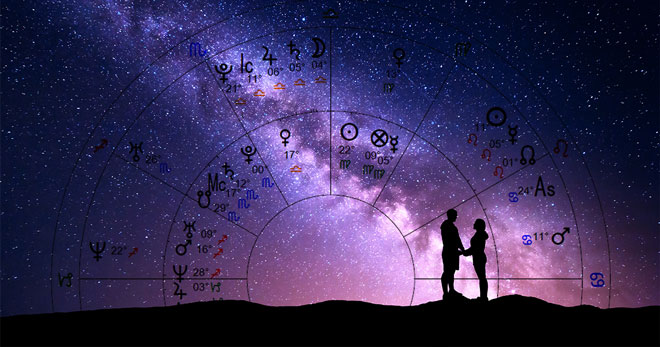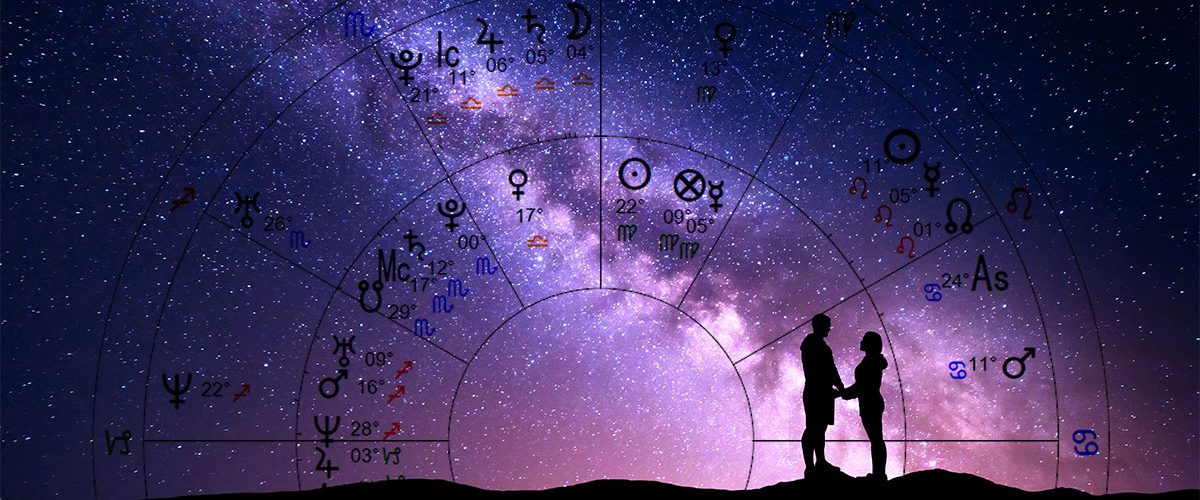
In episode 165 of the podcast astrologer John Green joins the show to talk about the concept of synastry, which is a technique that astrologers use to determine relationship dynamics by comparing birth chart placements.
The basic premise of natal astrology is that the birth chart reflects different facets of a person’s life, including information about their character or psyche.
Synastry is an extension of the concept of natal astrology, which holds that the birth charts of two individuals can be compared to identify dynamics that will arise in their relationship.
During the course of the podcast we have a wide-ranging discussion about some of the philosophical, conceptual, and practical details surrounding the use of synastry.
John wrote a book on synastry titled Do You Love Me? The Astrology of Relationships, and much of our discussion in this episode is based the presentation in his book.
For more more information about John’s work see his website: PsychologicalAstrology.com
He also teaches classes through the Mercury Internet School of Psychological Astrology.
Below you will find the show notes, followed by links to download or stream this episode.
Show Notes
- Basic premise of natal astrology is that the chart reflects the native’s life, character, etc.
- Synastry is a natural extension of the concept of natal astrology.
- Notion that each person is a permanent transit in your life/chart.
- Charts can be compared to each other to see compatibility/incompatibility.
- This is the premise of synastry.
- Can be done for many types of relationships.
- Romantic, business, family, friends, etc.
- References to synastry in Dorotheus and Ptolemy indicate it dates back to 1st century.
- Despite that, not a lot of books on the subject.
- A couple of standard modern treatments from the 70s:
- Ronald Davison: Synastry, Understanding Human Relations Through Astrology (1977)
- Francis Sakoian and Louis Acker, The Astrology of Human Relationships (1973)
- John says that the purpose of studying synastry is not to have perfect relationships.
- Helps to understand the dynamics involved in them better.
- Why do we get along easily with some people?
- Why do we naturally seem to have miscommunications with others?
- In some instances what look like chance-like circumstances are revealed as patterns built into the synastry.
- Some major themes with different people in our lives are indicated in our birth chart.
- Synastry is like a wildcard factor though, because it can further specify dynamics that come up with specific people in our lives.
- Sometimes these people have natal placements that emphasize our own.
- These are things outside of the natal chart.
- This may be part of the answer to the issue of twins.
- Synastry as one of the reasons two people can experience the same person differently.
- John says that the chart is a blueprint for self-realization.
- We can predict dynamics that will arise via synastry, but not how they will be resolved.
- This is a really crucial point in terms of astrological counseling.
- Also important in terms of the client’s expectations of what an astrologer can say
- The old adage that opposites attract sometimes manifesting literally in synastry as hard aspects creating more tension, excitement, and passion.
- Understanding indications for relationships in the natal itself before looking to synastry.
- If synastry activates natal placements in each chart, then what did those original natal placements indicate in the first place?
- People can experience parts of their chart in different ways in different eras.
- Basic components of synastry.
- What house does each person’s planets fall in in the other chart?
- Planet activates topics associated with that house.
- What aspects do the planets make to each other between charts?
- Cross-aspects
- Most important part of synastry.
- John says “you experience what is touched in your chart.”
- Second phase is person reacting in way symbolized
- Each person is like a permanent transit to your chart.
- Astrologers typically use a bi-wheel for this work.
- What house does each person’s planets fall in in the other chart?
- Cookbook interpretations don’t always work because they don’t take into account the natal condition of the planet, or how they may be tied in with other planets simultaneously
- The issue of prejudicing a client about their relationship.
- Transits as related to timing when synastry aspects will be activated.
- Other types of synastry
- Astrologers and their clients, family members, friends, coworkers, countries
- Leads to a deeper realization about the nature of astrology.
- Does everything have a chart, and synastry with other charts?
- Astrologers and their clients, family members, friends, coworkers, countries
Transcript
A full transcript of this episode is available: Episode 165 transcript
Listen to This Episode of the Podcast
Use the buttons below to either stream or download this episode:
Podcast: Play in new window | Download (Duration: 2:13:02 — 61.3MB)


This is my favourite conversation about synastry astrology to date. Thank you Chris for talking with John Green. I’m passionate about psychological astrology and it’s place for healing and inspiring people to deeply connect with themselves and others.
So it is possible to talk about the astrology of relationships for over 2 hours without once mentioning Composite Charts. I’m afraid I agree with Robert Hand, that while the Synastry may indicate potential issues, what can be done about them, if anything, is best sought in the Composite.
I already did an entire episode on composite charts last year.
That was a good episode, and in the discussion of composite charts with John Townley Synastry was referred to and discussed openly.
Hi Chris, can you link your Composite talk? I searched YouTube but cant find
Unfortunately there is only an audio version and no video:
https://theastrologypodcast.com/2017/10/13/composite-charts-with-originator-john-townley/
Hi Chris, I appreciate your podcasts; thank you for your work! As always, great information. At the beginning you mentioned the few astrology books available on synastry. I agree, but a couple must haves were written by Stephen Arroyo: Relationships and Life Cycles, and Person-to-Person Astrology. These were written a little later than the ones you mentioned in the podcast. Also, in them, he mentions Lois Haines Sargents’s How to Handle Human Relationships. The last was a cookbook from mid-20th century, but still quite informative.